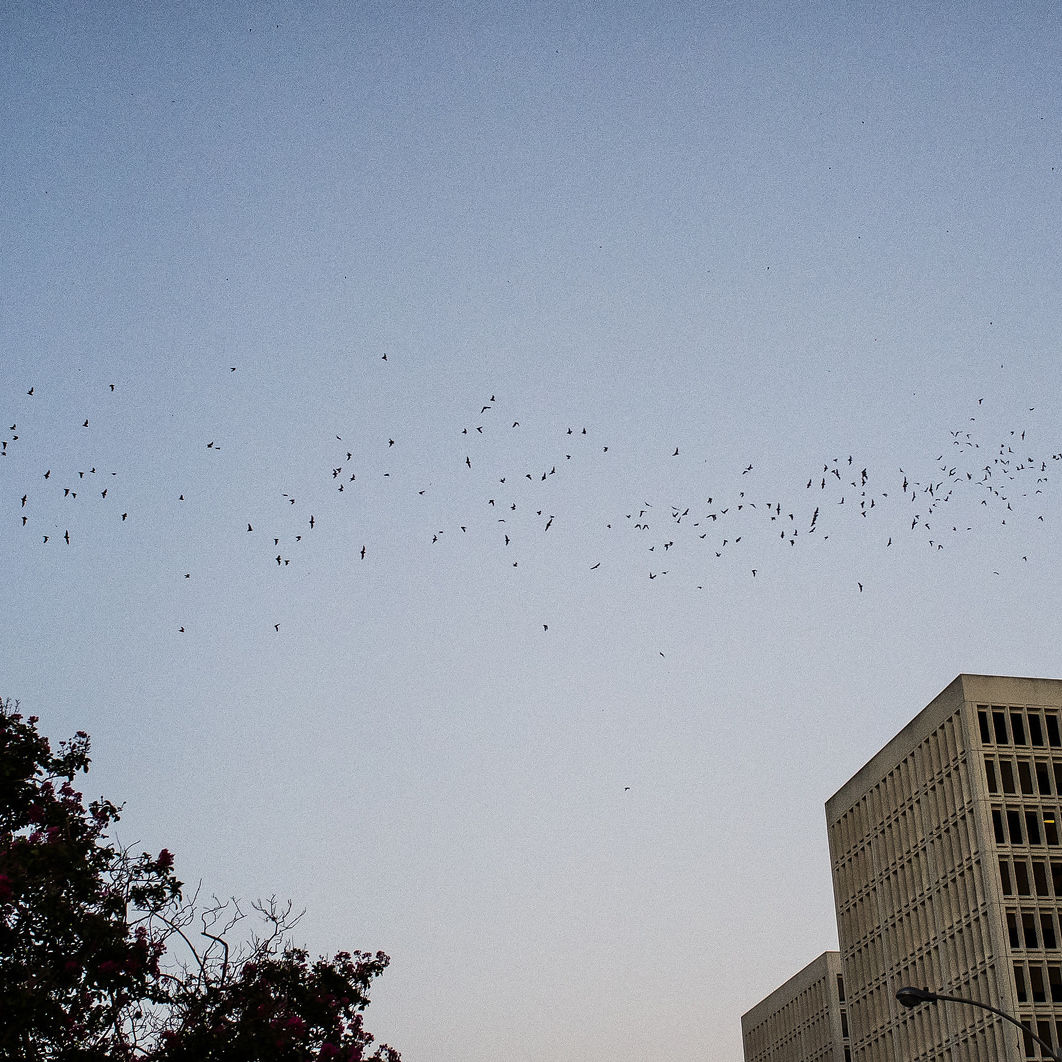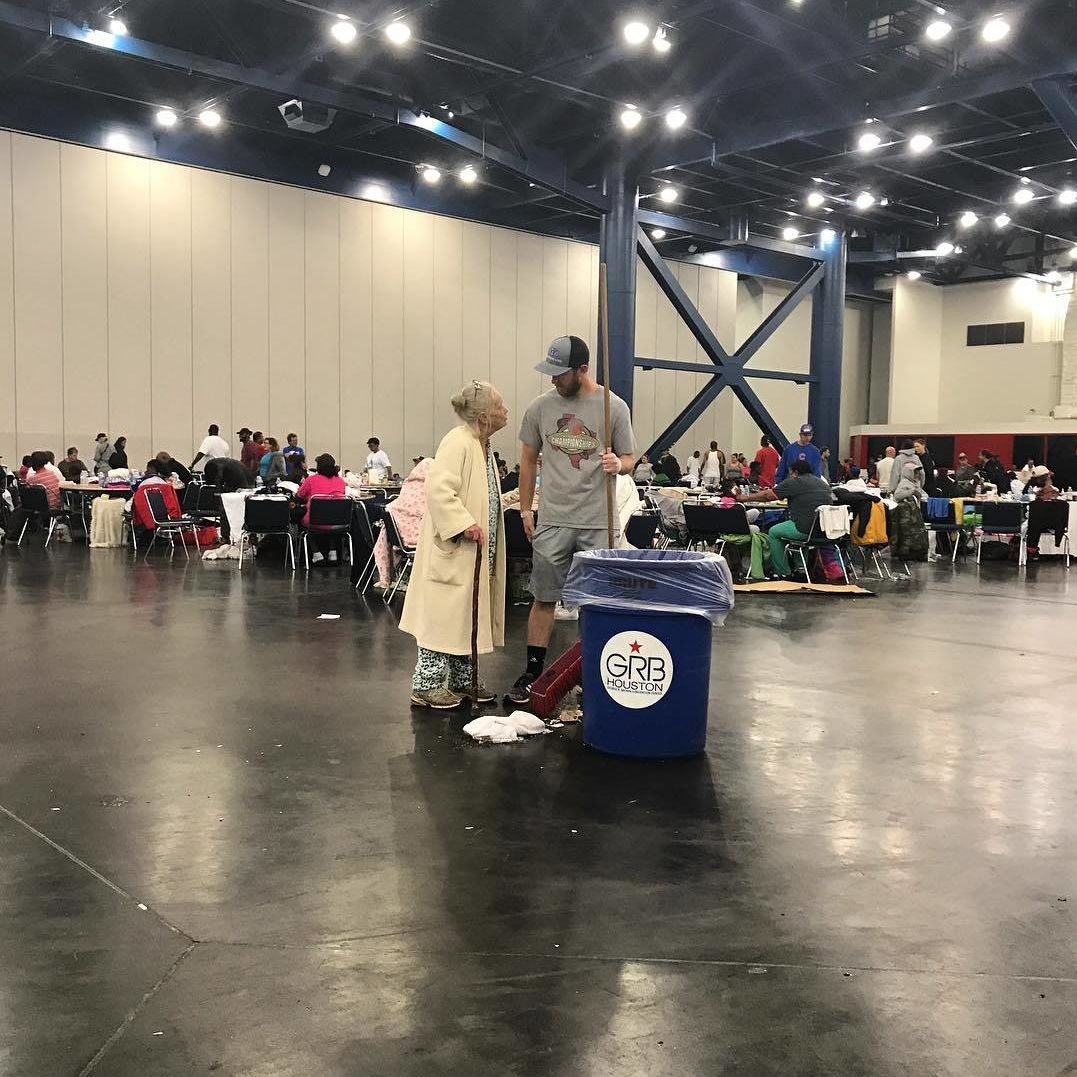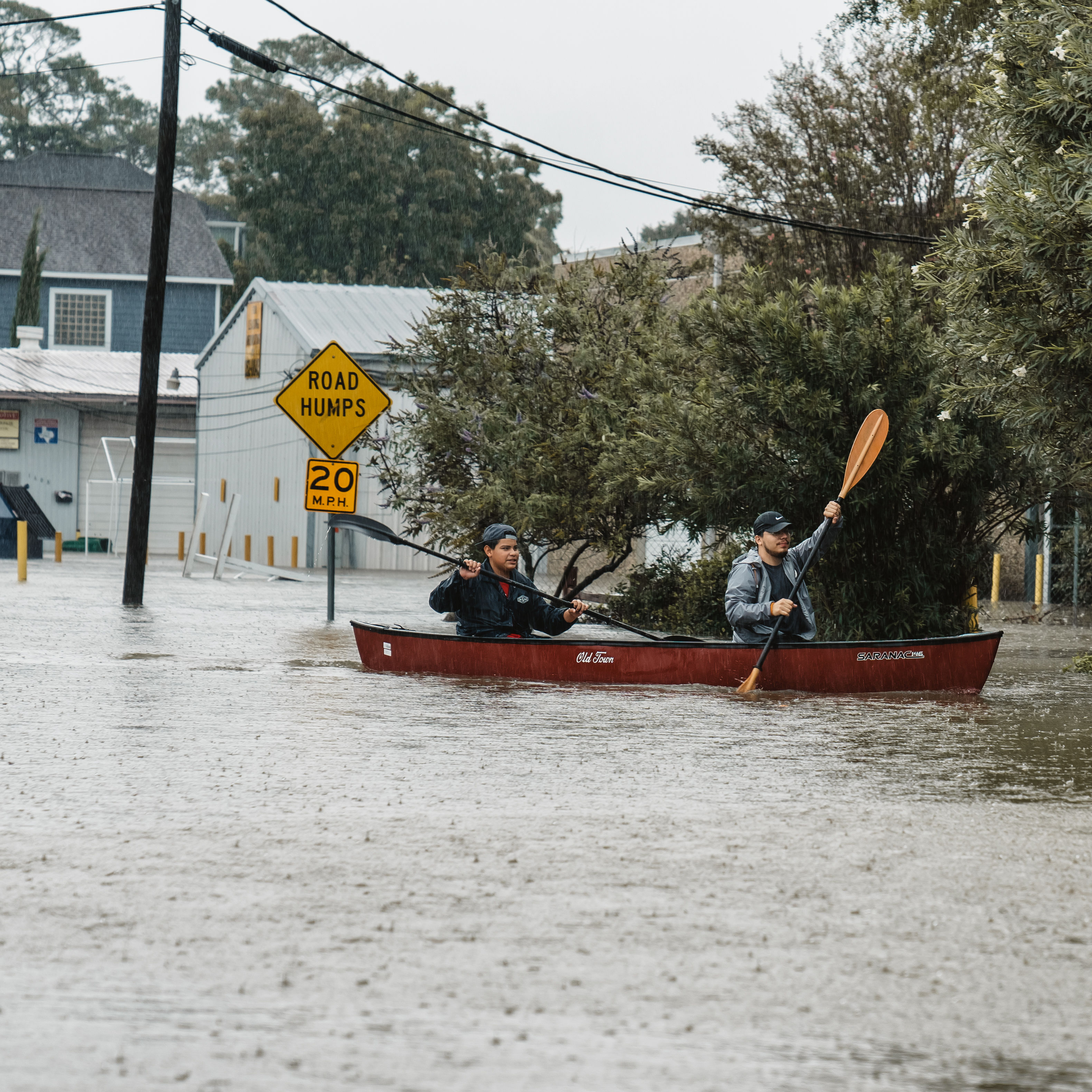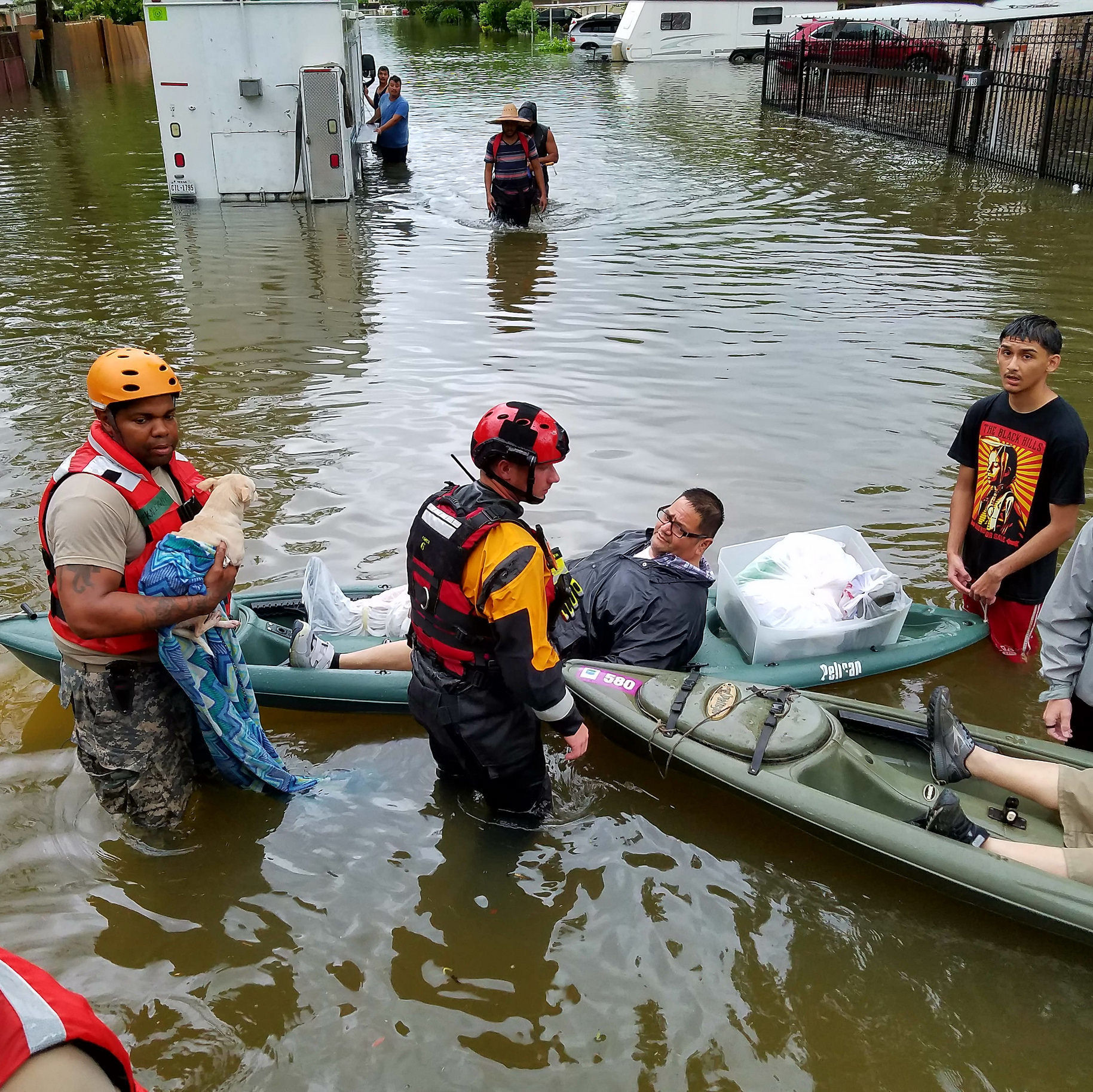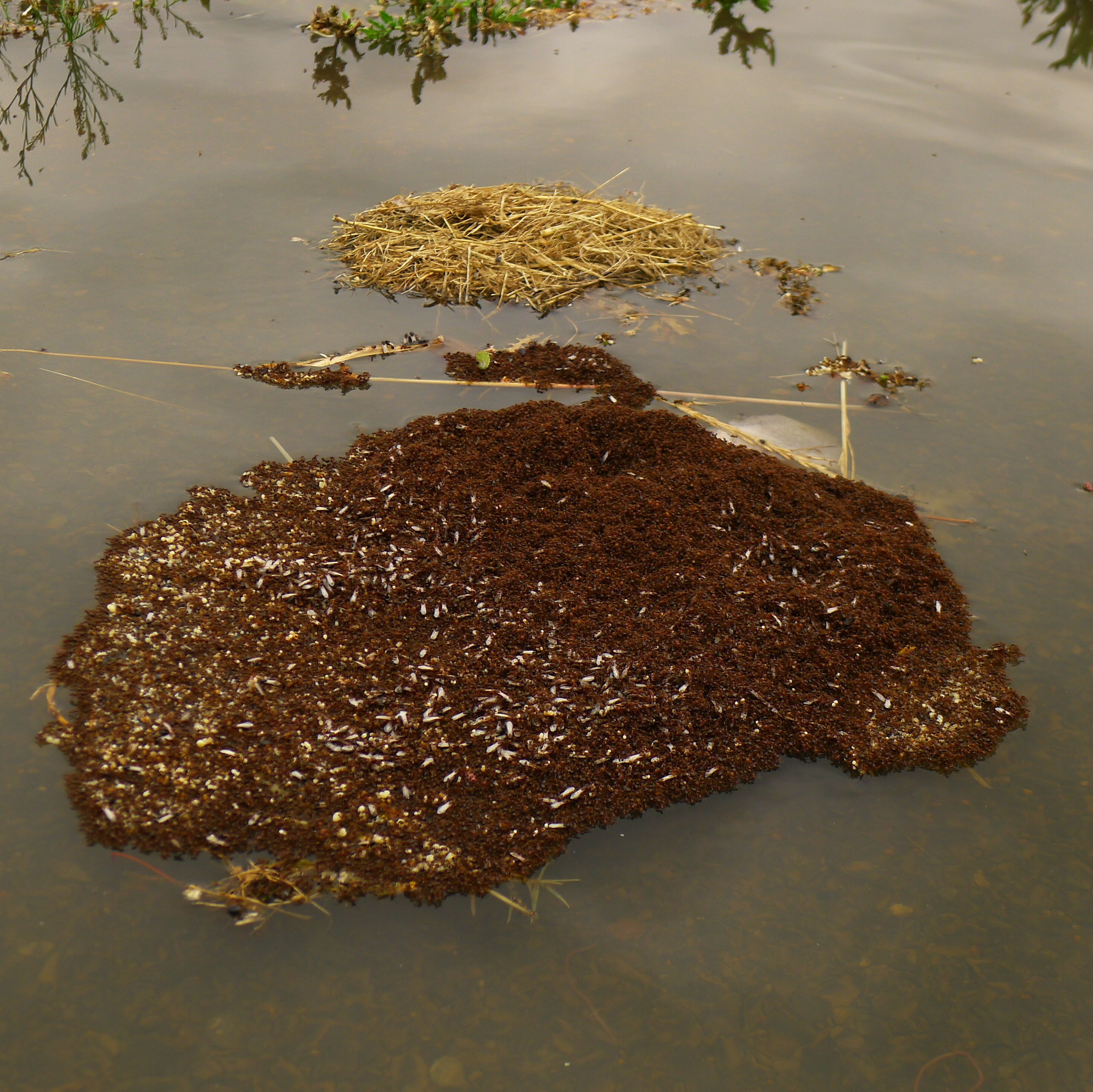The Waugh Bat Colony Didn't Escape Harvey
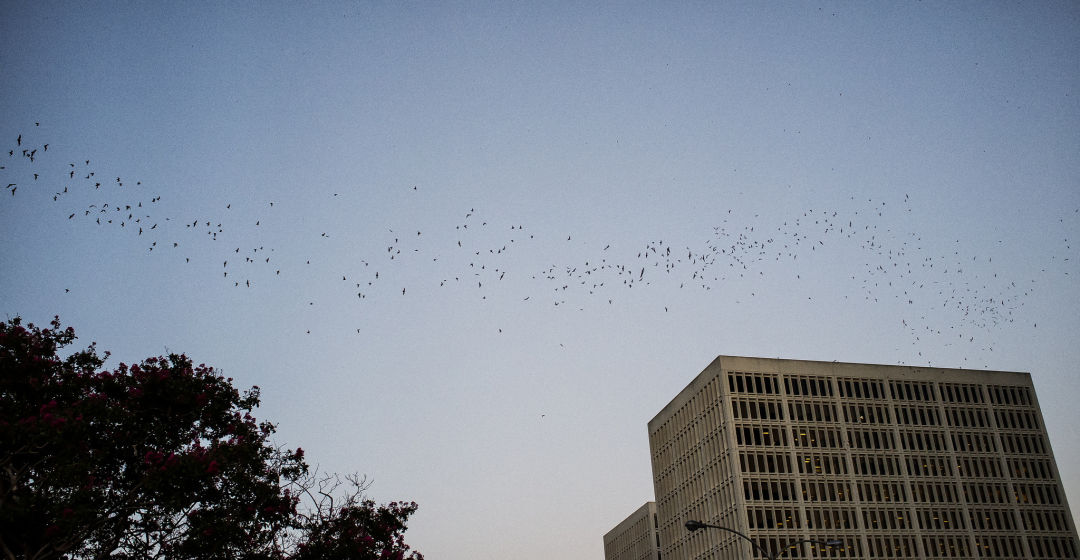
Bats take flight from the Waugh Bat Colony at dusk.
Image: nigel burgher / Flickr
If you've visited the Waugh Bat Colony, located under the Waugh Bridge along Buffalo Bayou, you know it to be ad hoc, smelly, and beautiful in an ugly sort of way. A metaphor for Houston, if you will.
Unfortunately, some of the bats shared our fate during Harvey as Buffalo Bayou swelled to consume the colony of more than 250,000. According to the Houston Chronicle, maintenance workers witnessed many of the bats decamp to the nearby America Tower, describing it like a scene from The Birds with "about a thousand" Mexican free-tailed bats taking flight. Some found shelter in the tower's facade and underground garage, but plenty drowned as floodwaters rose. Photos and videos on social media show folks scooping up remaining waterlogged bats with fishing nets.
As with the human evacuation debate, it's easy to play Monday morning quarterback. Why didn't all the bats just fly away? Well, the trouble is that bat flight is an incredibly complex process involving uniquely stretchy tendons, and their take off process requires a vertical drop from the roost. That didn't really work after the bayou reached the base of the bridge. Many drowned.
Mylea Bayless, partnerships director for Austin-based Bat Conservation International, says the population will bounce back, albeit slowly.
"Bats are long-lived and slow to reproduce however, having only one pup per year," she says. "Their populations will recover more slowly than other types of animals. Mexican free-tailed bats, the species that lives within the Waugh Drive Bridge, are relatively abundant compared to other less visible species. This will help the colony recover, and also one of the things that makes them so special. That they are abundant and roost in large groups allowing us to witness their spectacular and inspiring emergences."
The damage to one of the city's natural treasures is heartbreaking unto itself, of course, but the bats also serve a purpose. The colony consumes literal tons of bugs each night, with individual bats catching up to 1,200 insects an hour. A diminished bat population typically removes one natural defense against the swarm of mosquitoes that may or may not emerge in the aftermath of Harvey.
As The Atlantic reports, heavy flooding actually suppresses the mosquito population by eliminating breeding grounds. There is potential for a dangerous resurgence as flood waters recede, as was the case following Katrina in 2005:
The following year, researchers observed a more than twofold increase in cases of West Nile neuroinvasive disease—a more serious infection that can cause convulsions and even coma—in areas affected by Katrina. If Hurricane Harvey leaves a lot of standing water amongst the damage—standing water that stays for some time—Texas could see a similar delayed uptick in cases.
This is only a possibility. However, it's not like we've never seen a mosquito before; since 1965, Harris County has maintained a mosquito control program to combat public health risks such as West Nile virus and, more recently, Zika virus. Besides, Bayless says, the Mexican free-tailed bat prefer moths to mosquitoes. "These bats are not a key factor in controlling mosquito populations," she says.
Rescue operations for displaced bats are currently running parallel to those for Houstonians themselves. Bat World Sanctuary, a non-profit group out of Weatherford, Texas, near Fort Worth, deployed rescuers to Houston and is working with local volunteers. Think of them as the bat lover version of the Cajun Navy, except with rabies vaccinations and syringes of bat food.
After rescue, the bats will be treated for injuries, pneumonia, and dehydration and transported back to the sanctuary for rehabilitation. Eventually, they'll be released back into the wild.
As of Wednesday afternoon, Buffalo Bayou has begun to recede, and a number of surviving bats were heard squeaking at the Waugh Bat Colony. Contact Bat World Sanctuary via their site or on Facebook if you encounter a displaced bat. You can donate to their efforts here.
This post was updated to include input from Mylea Bayless of Bat Conservation International.





